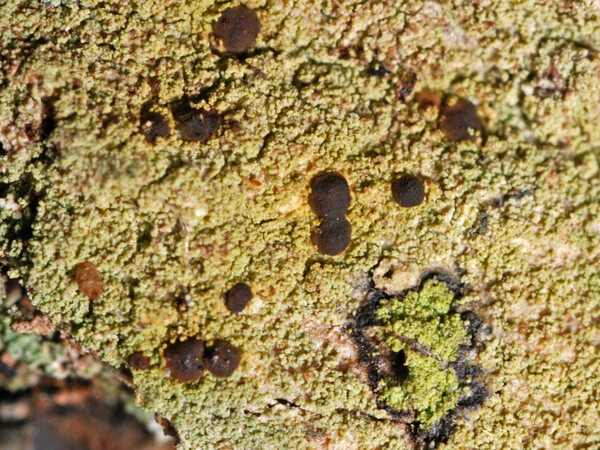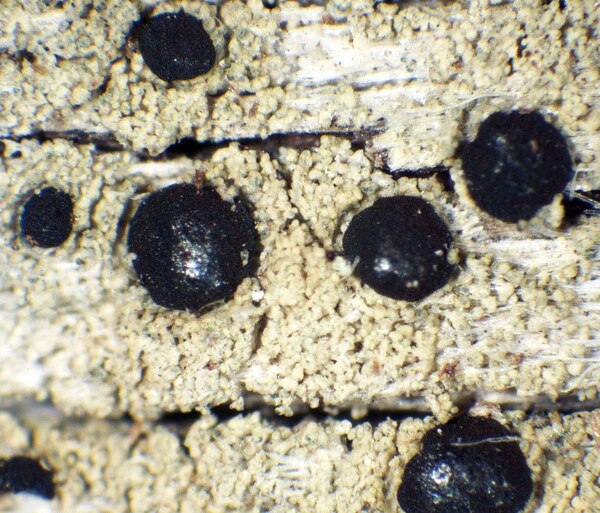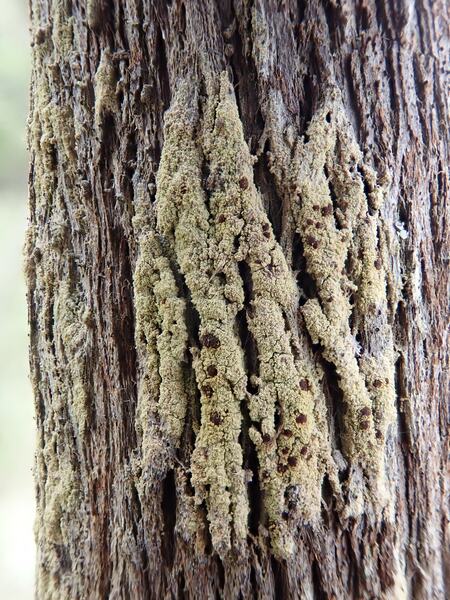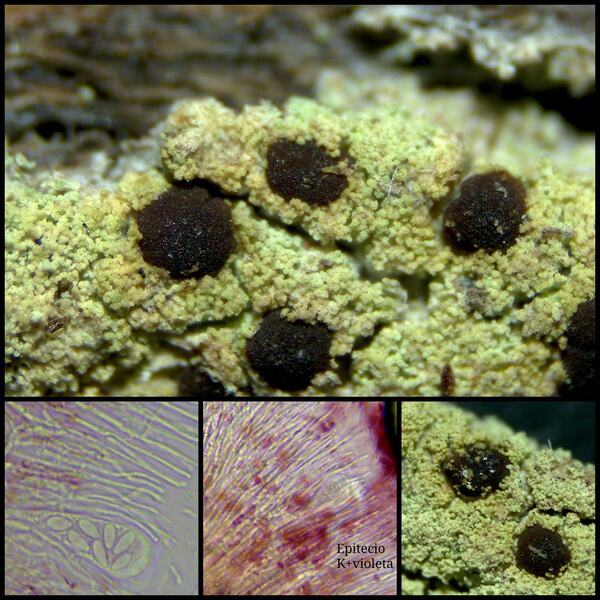Pyrrhospora quernea (Dicks.) Körb.
Syst. Lich. Germ.: 209, 1855. Basionym: Lichen querneus Dicks. - Fasc. Crypt. Brit., 1: 9, 1875.
Synonyms: Biatora quernea (Dicks.) Fr.; Lecidea quernea (Dicks.) Ach.; Protoblastenia quernea (Dicks.) Clauzade
Distribution: N - Frl, Ven (Ravera & al. 2022), Lomb, Piem (Matteucci & al. 2010). C - Tosc (Putortì & Loppi 1999, Benesperi & al. 2013), Marc, Umb (Ravera 2000, Ravera & al. 2006), Laz (Massari & Ravera 2002), Sar (Hafellner 1993b, Zedda 2002, 2002b, Zedda & Sipman 2001, Rizzi & al. 2011, Di Nuzzo & al. 2022). S - Camp (Catalano & al. 2012), Pugl (Nimis & Tretiach 1999, Durini & Medagli 2004), Bas (Puntillo & al. 2012), Cal (Puntillo 1995, 1996, Incerti & Nimis 2006), Si (Nimis & al. 1994, Grillo & Caniglia 2004, Caniglia & Grillo 2006b, Liistro & Cataldo 2011, Ottonello & al. 2011).
Description: Thallus crustose, episubstratic, rather thick, straw-coloured, dull sulphur yellow or yellowish brown, greenish yellow in shade-forms, sometimes with a reddish brown tint, continuous to cracked, often entirely dissolved into a sorediose/blastidiate crust, when well-developed forming large patches delimited by a black prothallus. Soredia/blastidia diffuse, pale yellow to yellowish brown, granular, c. 0.15 mm across, sometimes gathered in rounded, up to 0.5 mm wide aggregates. Apothecia biatorine, sessile, rusty red to dark red-brown, sometimes finally blackening, 0.3-1(-1.5) mm across, often irregular in outline, with an initially flat but soon strongly convex disc and an entire or undulate, soon excluded proper margin. Proper exciple poorly developed, of conglutinated, thick-walled, radially oriented hyphae; epithecium inspersed with reddish brown granules, K+ dissolving purple-red; hymenium colourless, c. 50 µm high, K/I+ blue; paraphyses coherent, simple or sparingly branched in upper part, submoniliform, hardly swollen at tips; hypothecium colourless. Asci 8-spored, broadly clavate, with a well developed, amyloid tholus containing an ocular chamber and a broad axial mass, Lecanora-type. Ascospores 1-celled, hyaline (turning brownish when old), short-ellipsoid to ellipsoid, 7-14 x 5-8 µm. Photobiont chlorococcoid. Spot tests: thallus K- or K+ very pale yellow, C+ and KC+ orange, P- or P+ weakly yellow, UV+ orange. Chemistry: thallus with isoarthothelin (major), thiophanic and thiophaninic acids (minor), plus different xanthones; apothecia with 7-chloroemodin.Note: a mainly Mediterranean-Atlantic species found on bark, sometimes on lignum, abundant in humid coastal-Mediterranean, mostly Tyrrhenian sites, where it is often fertile, much rarer elsewhere; also occurring, albeit rarely - and then mostly sterile - in the Insubrian District of Lombardy and in lowland areas of Friuli, Veneto and Piemonte; probably extinct in Friuli and Veneto.
Growth form: Crustose
Substrata: bark
Photobiont: green algae other than Trentepohlia
Reproductive strategy: mainly asexual, by soredia, or soredia-like structures (e.g. blastidia)
Most common in areas with a humid-warm climate (e.g. most of Tyrrenian Italy)
Commonnes-rarity: (info)
Alpine belt: absent
Subalpine belt: absent
Oromediterranean belt: absent
Montane belt: absent
Submediterranean belt: extremely rare
Padanian area: absent
Humid submediterranean belt: rather common
Humid mediterranean belt: common
Dry mediterranean belt: very rare

Predictive model
Herbarium samples
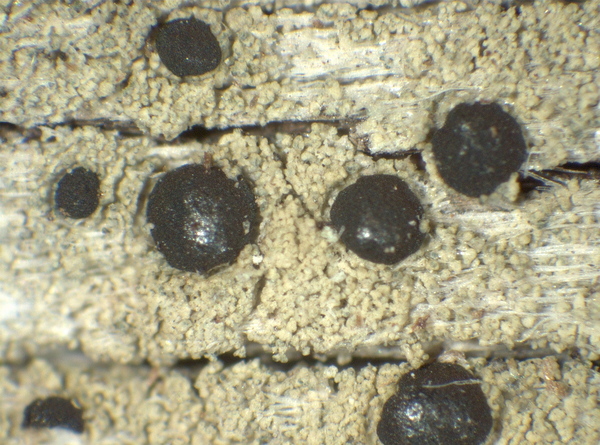

P.L.Nimis; Owner: Department of Life Sciences, University of Trieste
Herbarium: TSB (38336)
2008.02.25


P.L.Nimis; Owner: Department of Life Sciences, University of Trieste
Herbarium: TSB (38336)
2008.02.25
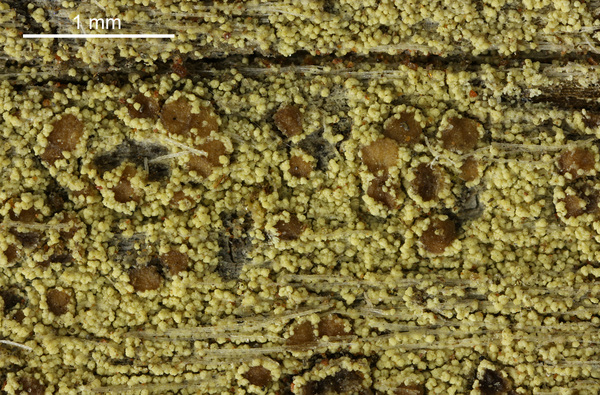

Felix Schumm – CC BY-SA 4.0
[10656], Portugal, Azoren, Sao Miguel: An der Straße von Ribeira Grande zum Lagoa do Fogo an der Abzweigung nach Deira Velha, 37°47.057' N, 25°30.051' W, 330 m.Leg. Schumm 02.06.2003


Felix Schumm – CC BY-SA 4.0
[10794], Portugal, Azoren, Sao Miguel, Südufer des Lagoa das Furnas, 270 m, 37°45.022' N, 25°19.807' W. Leg. Schumm 03.06.2003.
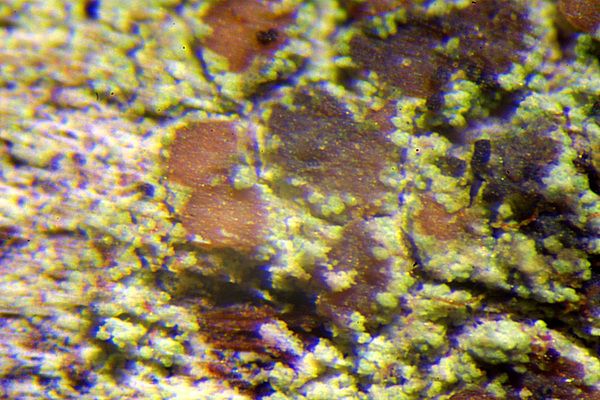

Felix Schumm – CC BY-SA 4.0
[10794], Portugal, Azoren, Sao Miguel, Südufer des Lagoa das Furnas, 270 m, 37°45.022' N, 25°19.807' W. Leg. Schumm 03.06.2003.


Felix Schumm – CC BY-SA 4.0
[10794], Portugal, Azoren, Sao Miguel, Südufer des Lagoa das Furnas, 270 m, 37°45.022' N, 25°19.807' W. Leg. Schumm 03.06.2003.


Felix Schumm – CC BY-SA 4.0
[10794], Portugal, Azoren, Sao Miguel, Südufer des Lagoa das Furnas, 270 m, 37°45.022' N, 25°19.807' W. Leg. Schumm 03.06.2003.
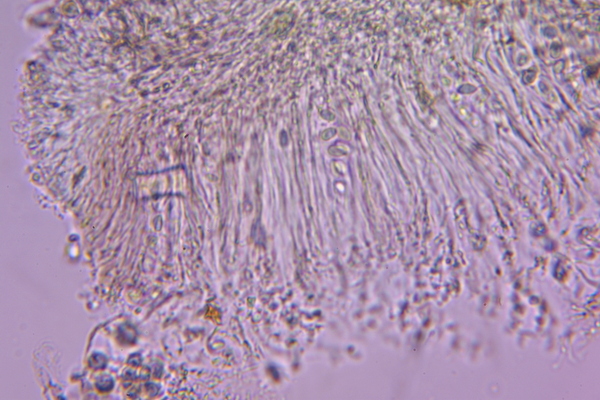

Felix Schumm – CC BY-SA 4.0
[10794], Portugal, Azoren, Sao Miguel, Südufer des Lagoa das Furnas, 270 m, 37°45.022' N, 25°19.807' W. Leg. Schumm 03.06.2003.
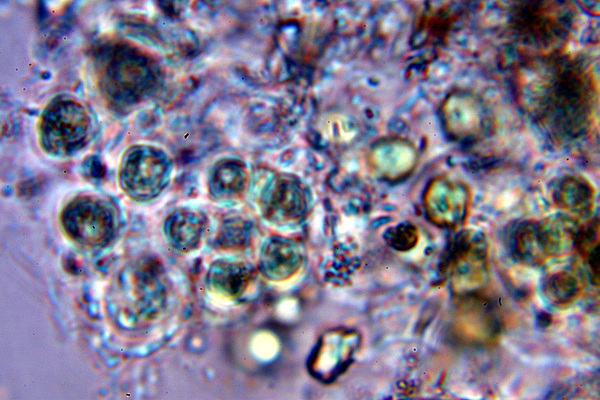

Felix Schumm – CC BY-SA 4.0
[10794], Portugal, Azoren, Sao Miguel, Südufer des Lagoa das Furnas, 270 m, 37°45.022' N, 25°19.807' W. Leg. Schumm 03.06.2003.
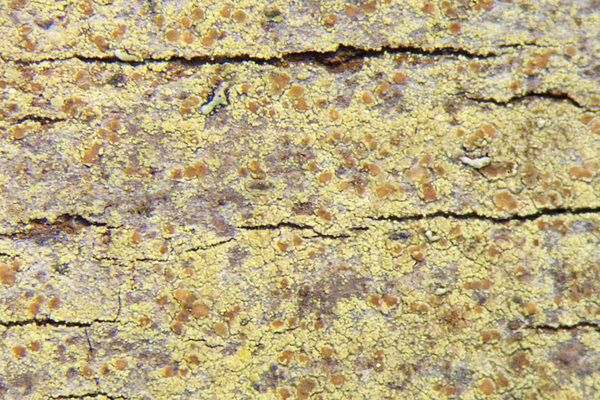

Felix Schumm – CC BY-SA 4.0
[11204], Portugal, Azoren, Sao Miguel, SO-Ufer des Lagoa Azul, 37°51.307' N, 25°47.060' W, 280 m, an Laubbaumrinden. Leg. Schumm 06.06.2003, det Schumm.
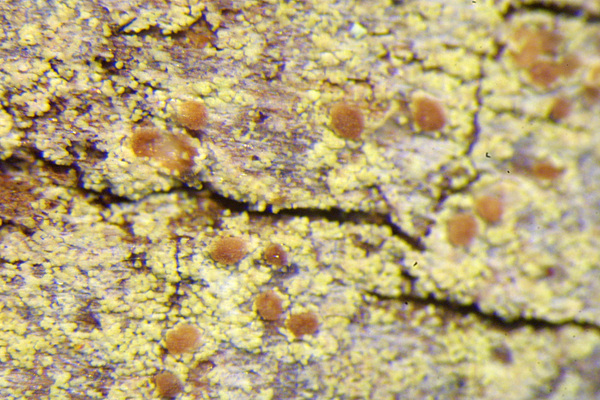

Felix Schumm – CC BY-SA 4.0
[11204], Portugal, Azoren, Sao Miguel, SO-Ufer des Lagoa Azul, 37°51.307' N, 25°47.060' W, 280 m, an Laubbaumrinden. Leg. Schumm 06.06.2003, det Schumm.
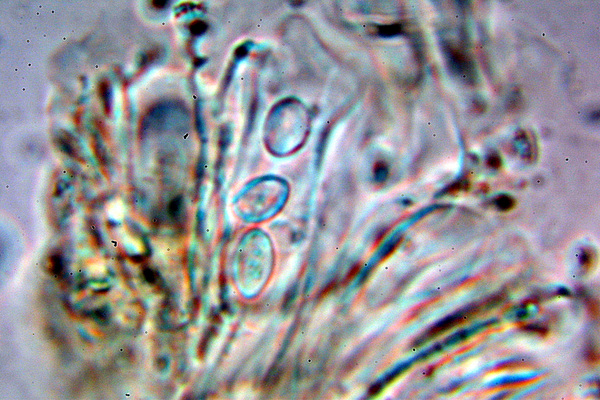

Felix Schumm – CC BY-SA 4.0
[11204], Portugal, Azoren, Sao Miguel, SO-Ufer des Lagoa Azul, 37°51.307' N, 25°47.060' W, 280 m, an Laubbaumrinden. Leg. Schumm 06.06.2003, det Schumm.
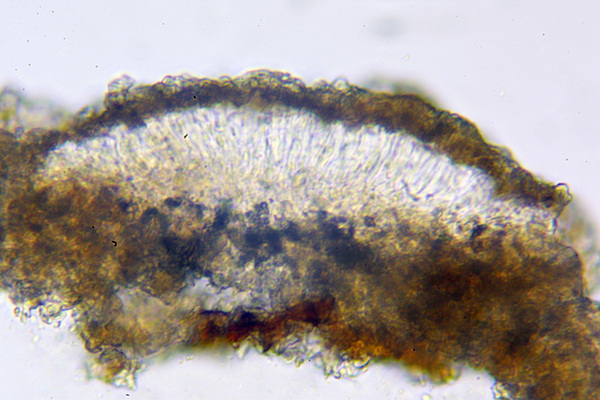

Felix Schumm – CC BY-SA 4.0
[11204], Portugal, Azoren, Sao Miguel, SO-Ufer des Lagoa Azul, 37°51.307' N, 25°47.060' W, 280 m, an Laubbaumrinden. Leg. Schumm 06.06.2003, det Schumm.
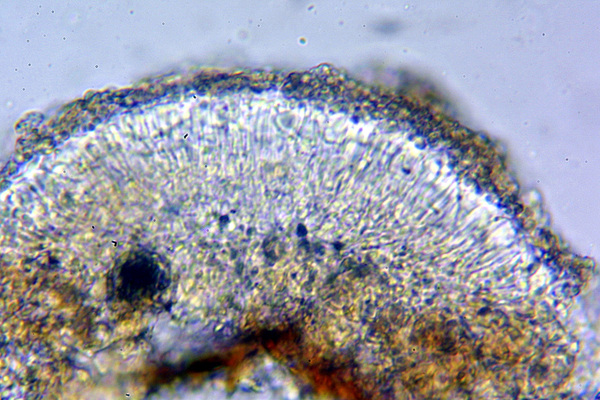

Felix Schumm – CC BY-SA 4.0
[11204], Portugal, Azoren, Sao Miguel, SO-Ufer des Lagoa Azul, 37°51.307' N, 25°47.060' W, 280 m, an Laubbaumrinden. Leg. Schumm 06.06.2003, det Schumm.


Felix Schumm – CC BY-SA 4.0
[11204], Portugal, Azoren, Sao Miguel, SO-Ufer des Lagoa Azul, 37°51.307' N, 25°47.060' W, 280 m, an Laubbaumrinden. Leg. Schumm 06.06.2003, det Schumm.


Felix Schumm – CC BY-SA 4.0
[11204], Portugal, Azoren, Sao Miguel, SO-Ufer des Lagoa Azul, 37°51.307' N, 25°47.060' W, 280 m, an Laubbaumrinden. Leg. Schumm 06.06.2003, det Schumm.
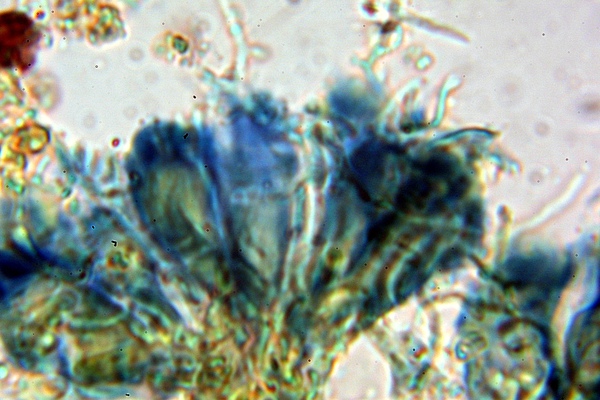

Felix Schumm – CC BY-SA 4.0
[11204], Portugal, Azoren, Sao Miguel, SO-Ufer des Lagoa Azul, 37°51.307' N, 25°47.060' W, 280 m, an Laubbaumrinden. Leg. Schumm 06.06.2003, det Schumm.
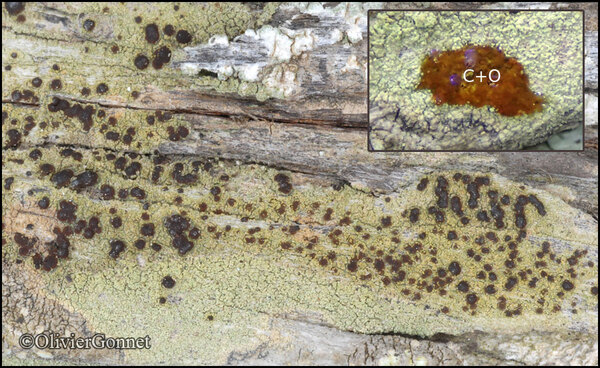
Courtesy Danièle et Olivier Gonnet - Source: https://www.afl-lichenologie.fr/Photos_AFL/Photos_AFL_P/Text_P/Pyrrhospora_quernea.htm
France, 15/03/2014 - île de Cavallo - Corse
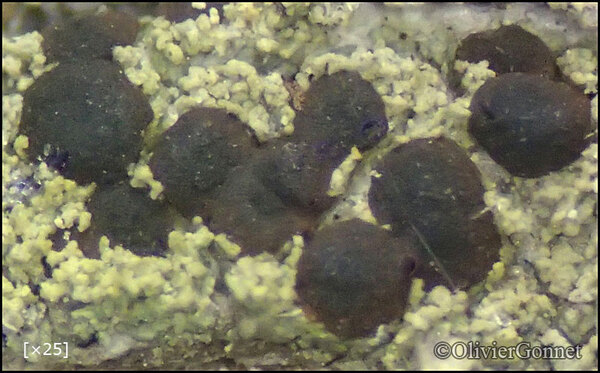
Courtesy Danièle et Olivier Gonnet - Source: https://www.afl-lichenologie.fr/Photos_AFL/Photos_AFL_P/Text_P/Pyrrhospora_quernea.htm
France, 15/03/2014 - île de Cavallo - Corse
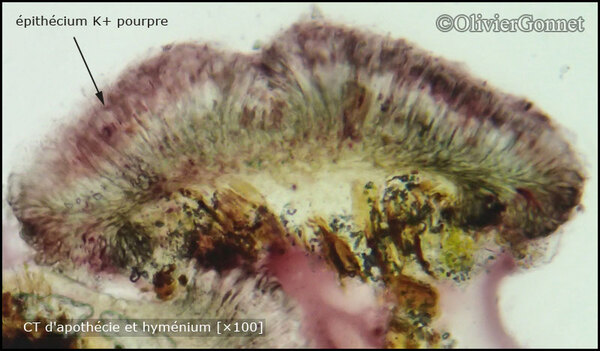
Courtesy Danièle et Olivier Gonnet - Source: https://www.afl-lichenologie.fr/Photos_AFL/Photos_AFL_P/Text_P/Pyrrhospora_quernea.htm
France, 15/03/2014 - île de Cavallo - Corse
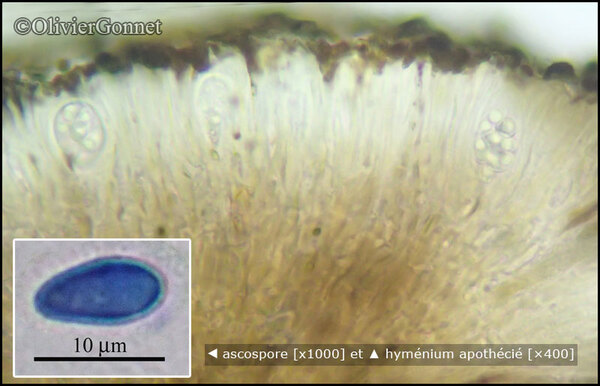
Courtesy Danièle et Olivier Gonnet - Source: https://www.afl-lichenologie.fr/Photos_AFL/Photos_AFL_P/Text_P/Pyrrhospora_quernea.htm
France, 15/03/2014 - île de Cavallo - Corse
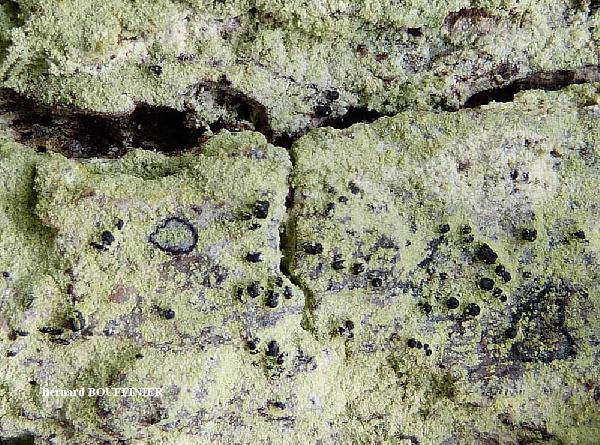
Bernard Bouffinier - Source: http://www.lichensmaritimes.org/index.php?task=fiche&lichen=533&lang=en
France, Forêt du Cranou
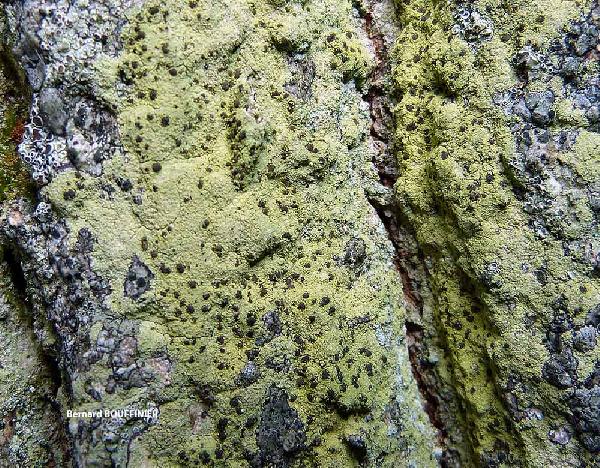
Bernard Bouffinier - Source: http://www.lichensmaritimes.org/index.php?task=fiche&lichen=533&lang=en
France, Brennilis

Bernard Bouffinier - Source: http://www.lichensmaritimes.org/index.php?task=fiche&lichen=533&lang=en
France, Brennilis
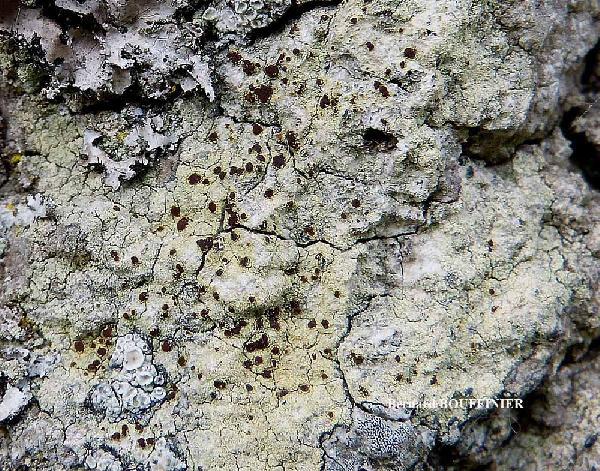
Bernard Bouffinier - Source: http://www.lichensmaritimes.org/index.php?task=fiche&lichen=533&lang=en
France, Rostrenen

Joel Querellou - Source: http://www.lichensmaritimes.org/index.php?task=fiche&lichen=533&lang=en
France, Brennilis
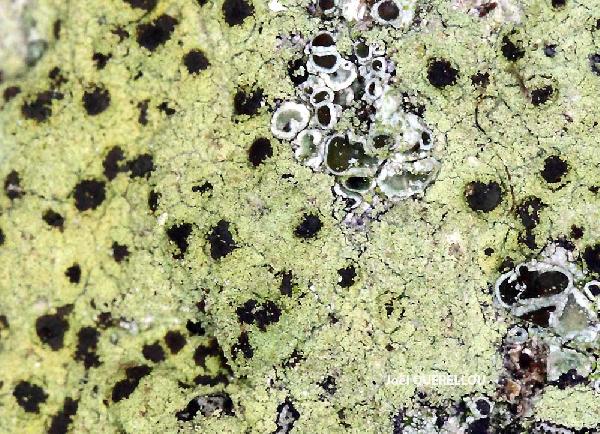
Joel Querellou - Source: http://www.lichensmaritimes.org/index.php?task=fiche&lichen=533&lang=en
France, Brennilis
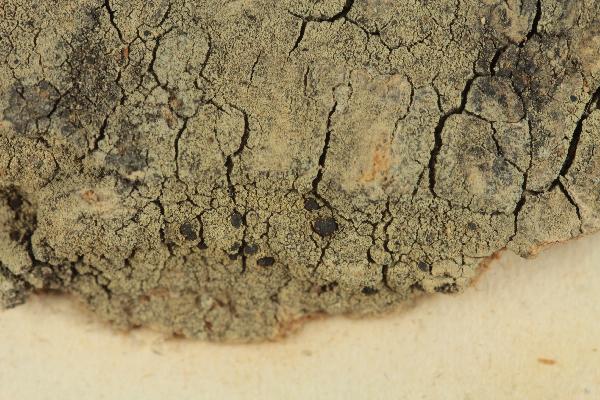
Collezione lichenologica Abramo Massalongo del Museo di Storia Naturale G. Ligabue di Venezia - Autori: Seggi, Linda; Trabucco, Raffaella Proprietà: Fondazione Musei Civici di Venezia - CC BY-NC
Italy, Veneto, in M. Baldo 1855
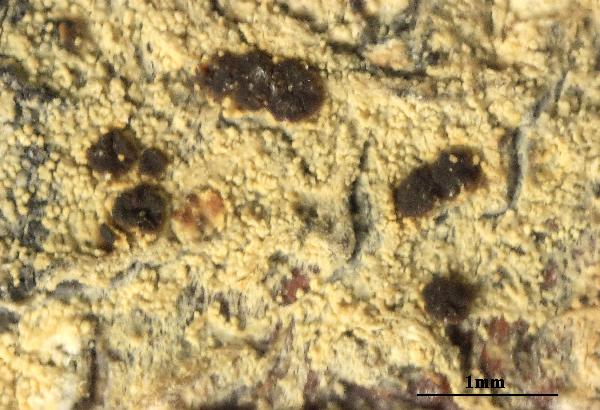

Felix Schumm - CC BY-SA 4.0
[VZR410], Baleares insulae (Hispania), insula Menorca, Es Mercadal,
Cami d'en Kane, loco Sa Roca dicto, 150 m. Ad corticem Quercus ilicis
in silva Pinus halepensis-Quercus ilex, 39°59' ad septentr., 4°11' ad
orient., Leg. et det. K. Kalb, 31.8.1999. EX A. VEZDA: LICHENES
RARIORES EXSICCATI NR. 410.
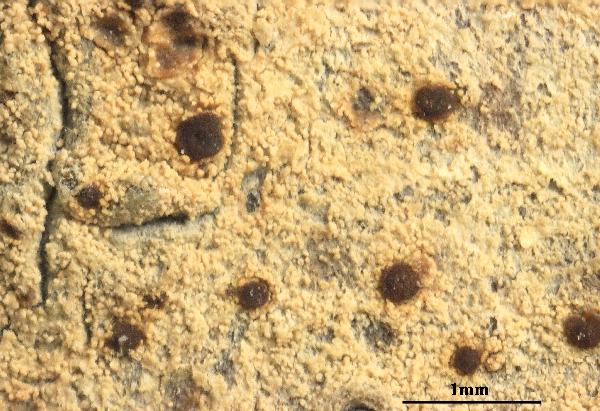

Felix Schumm - CC BY-SA 4.0
[VZR410], Baleares insulae (Hispania), insula Menorca, Es Mercadal,
Cami d'en Kane, loco Sa Roca dicto, 150 m. Ad corticem Quercus ilicis
in silva Pinus halepensis-Quercus ilex, 39°59' ad septentr., 4°11' ad
orient., Leg. et det. K. Kalb, 31.8.1999. EX A. VEZDA: LICHENES
RARIORES EXSICCATI NR. 410.
Growth form: Crustose
Substrata: bark
Photobiont: green algae other than Trentepohlia
Reproductive strategy: mainly asexual, by soredia, or soredia-like structures (e.g. blastidia)
Most common in areas with a humid-warm climate (e.g. most of Tyrrenian Italy)
Commonnes-rarity: (info)
Alpine belt: absent
Subalpine belt: absent
Oromediterranean belt: absent
Montane belt: absent
Submediterranean belt: extremely rare
Padanian area: absent
Humid submediterranean belt: rather common
Humid mediterranean belt: common
Dry mediterranean belt: very rare

Predictive model
| Herbarium samples |


P.L.Nimis; Owner: Department of Life Sciences, University of Trieste
Herbarium: TSB (38336)
2008.02.25


P.L.Nimis; Owner: Department of Life Sciences, University of Trieste
Herbarium: TSB (38336)
2008.02.25


Felix Schumm – CC BY-SA 4.0
[10656], Portugal, Azoren, Sao Miguel: An der Straße von Ribeira Grande zum Lagoa do Fogo an der Abzweigung nach Deira Velha, 37°47.057' N, 25°30.051' W, 330 m.Leg. Schumm 02.06.2003


Felix Schumm – CC BY-SA 4.0
[10794], Portugal, Azoren, Sao Miguel, Südufer des Lagoa das Furnas, 270 m, 37°45.022' N, 25°19.807' W. Leg. Schumm 03.06.2003.


Felix Schumm – CC BY-SA 4.0
[10794], Portugal, Azoren, Sao Miguel, Südufer des Lagoa das Furnas, 270 m, 37°45.022' N, 25°19.807' W. Leg. Schumm 03.06.2003.


Felix Schumm – CC BY-SA 4.0
[10794], Portugal, Azoren, Sao Miguel, Südufer des Lagoa das Furnas, 270 m, 37°45.022' N, 25°19.807' W. Leg. Schumm 03.06.2003.


Felix Schumm – CC BY-SA 4.0
[10794], Portugal, Azoren, Sao Miguel, Südufer des Lagoa das Furnas, 270 m, 37°45.022' N, 25°19.807' W. Leg. Schumm 03.06.2003.


Felix Schumm – CC BY-SA 4.0
[10794], Portugal, Azoren, Sao Miguel, Südufer des Lagoa das Furnas, 270 m, 37°45.022' N, 25°19.807' W. Leg. Schumm 03.06.2003.


Felix Schumm – CC BY-SA 4.0
[10794], Portugal, Azoren, Sao Miguel, Südufer des Lagoa das Furnas, 270 m, 37°45.022' N, 25°19.807' W. Leg. Schumm 03.06.2003.


Felix Schumm – CC BY-SA 4.0
[11204], Portugal, Azoren, Sao Miguel, SO-Ufer des Lagoa Azul, 37°51.307' N, 25°47.060' W, 280 m, an Laubbaumrinden. Leg. Schumm 06.06.2003, det Schumm.


Felix Schumm – CC BY-SA 4.0
[11204], Portugal, Azoren, Sao Miguel, SO-Ufer des Lagoa Azul, 37°51.307' N, 25°47.060' W, 280 m, an Laubbaumrinden. Leg. Schumm 06.06.2003, det Schumm.


Felix Schumm – CC BY-SA 4.0
[11204], Portugal, Azoren, Sao Miguel, SO-Ufer des Lagoa Azul, 37°51.307' N, 25°47.060' W, 280 m, an Laubbaumrinden. Leg. Schumm 06.06.2003, det Schumm.


Felix Schumm – CC BY-SA 4.0
[11204], Portugal, Azoren, Sao Miguel, SO-Ufer des Lagoa Azul, 37°51.307' N, 25°47.060' W, 280 m, an Laubbaumrinden. Leg. Schumm 06.06.2003, det Schumm.


Felix Schumm – CC BY-SA 4.0
[11204], Portugal, Azoren, Sao Miguel, SO-Ufer des Lagoa Azul, 37°51.307' N, 25°47.060' W, 280 m, an Laubbaumrinden. Leg. Schumm 06.06.2003, det Schumm.


Felix Schumm – CC BY-SA 4.0
[11204], Portugal, Azoren, Sao Miguel, SO-Ufer des Lagoa Azul, 37°51.307' N, 25°47.060' W, 280 m, an Laubbaumrinden. Leg. Schumm 06.06.2003, det Schumm.


Felix Schumm – CC BY-SA 4.0
[11204], Portugal, Azoren, Sao Miguel, SO-Ufer des Lagoa Azul, 37°51.307' N, 25°47.060' W, 280 m, an Laubbaumrinden. Leg. Schumm 06.06.2003, det Schumm.


Felix Schumm – CC BY-SA 4.0
[11204], Portugal, Azoren, Sao Miguel, SO-Ufer des Lagoa Azul, 37°51.307' N, 25°47.060' W, 280 m, an Laubbaumrinden. Leg. Schumm 06.06.2003, det Schumm.

Courtesy Danièle et Olivier Gonnet - Source: https://www.afl-lichenologie.fr/Photos_AFL/Photos_AFL_P/Text_P/Pyrrhospora_quernea.htm
France, 15/03/2014 - île de Cavallo - Corse

Courtesy Danièle et Olivier Gonnet - Source: https://www.afl-lichenologie.fr/Photos_AFL/Photos_AFL_P/Text_P/Pyrrhospora_quernea.htm
France, 15/03/2014 - île de Cavallo - Corse

Courtesy Danièle et Olivier Gonnet - Source: https://www.afl-lichenologie.fr/Photos_AFL/Photos_AFL_P/Text_P/Pyrrhospora_quernea.htm
France, 15/03/2014 - île de Cavallo - Corse

Courtesy Danièle et Olivier Gonnet - Source: https://www.afl-lichenologie.fr/Photos_AFL/Photos_AFL_P/Text_P/Pyrrhospora_quernea.htm
France, 15/03/2014 - île de Cavallo - Corse

Bernard Bouffinier - Source: http://www.lichensmaritimes.org/index.php?task=fiche&lichen=533&lang=en
France, Forêt du Cranou

Bernard Bouffinier - Source: http://www.lichensmaritimes.org/index.php?task=fiche&lichen=533&lang=en
France, Brennilis

Bernard Bouffinier - Source: http://www.lichensmaritimes.org/index.php?task=fiche&lichen=533&lang=en
France, Brennilis

Bernard Bouffinier - Source: http://www.lichensmaritimes.org/index.php?task=fiche&lichen=533&lang=en
France, Rostrenen

Joel Querellou - Source: http://www.lichensmaritimes.org/index.php?task=fiche&lichen=533&lang=en
France, Brennilis

Joel Querellou - Source: http://www.lichensmaritimes.org/index.php?task=fiche&lichen=533&lang=en
France, Brennilis

Collezione lichenologica Abramo Massalongo del Museo di Storia Naturale G. Ligabue di Venezia - Autori: Seggi, Linda; Trabucco, Raffaella Proprietà: Fondazione Musei Civici di Venezia - CC BY-NC
Italy, Veneto, in M. Baldo 1855


Felix Schumm - CC BY-SA 4.0
[VZR410], Baleares insulae (Hispania), insula Menorca, Es Mercadal, Cami d'en Kane, loco Sa Roca dicto, 150 m. Ad corticem Quercus ilicis in silva Pinus halepensis-Quercus ilex, 39°59' ad septentr., 4°11' ad orient., Leg. et det. K. Kalb, 31.8.1999. EX A. VEZDA: LICHENES RARIORES EXSICCATI NR. 410.


 INDEX FUNGORUM
INDEX FUNGORUM
 GBIF
GBIF
 DOLICHENS
DOLICHENS
